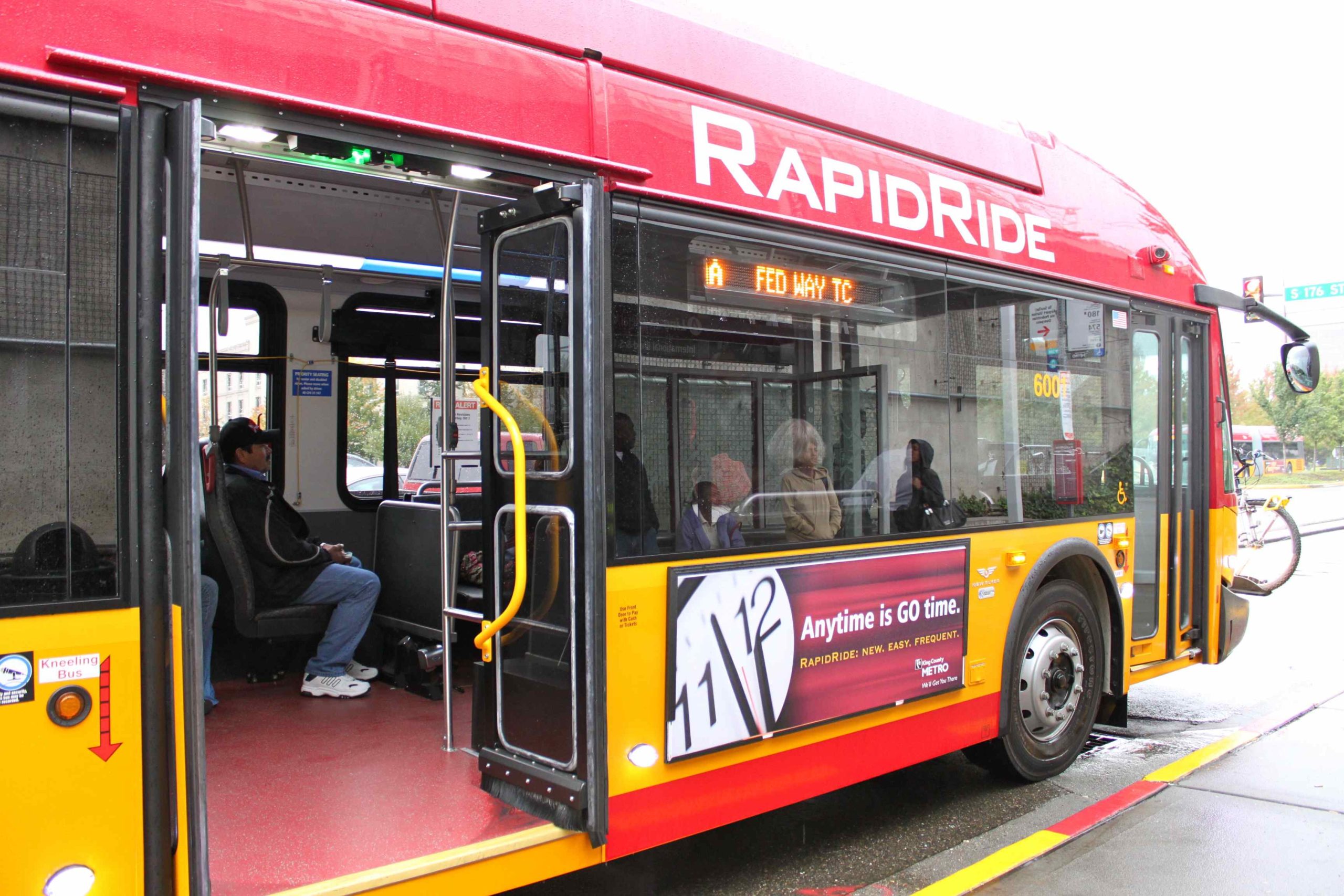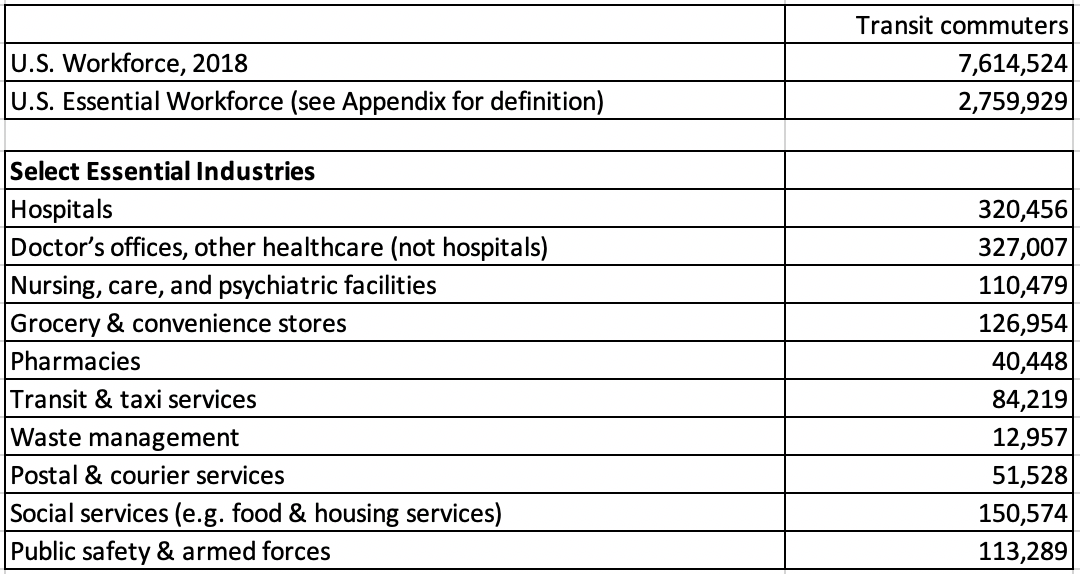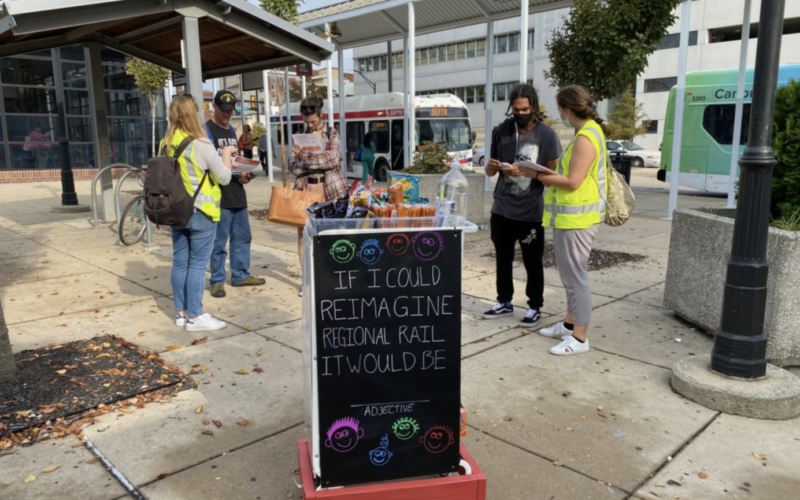
Workers classified as essential during the COVID-19 emergency account for 36 percent of total transit commuters in the United States. Service must be maintained to allow for safe spacing on buses and trains.
Transit networks, like hospital systems and food supply chains, are vital to the success of the COVID-19 public health response. They transport millions of essential personnel to and from their jobs every day, including hospital staff, grocery store workers, pharmacists, social service providers, and others who are called to work even as many Americans hunker down under “shelter in place” mandates.
According to 2018 Census data, an estimated 2.8 million American workers in essential industries commute to work on transit — about 36 percent of all transit commuters. On a normal day, essential workers account for 38 percent of transit commuters in New York City, 33 percent in Seattle, and 36 percent in Miami.
While transit ridership is much lower than usual as Americans follow the imperative to stay at home as much as possible, these essential workers must continue to have access to transit service to keep people safe, healthy, and fed. And because riders should maintain six feet of distance from other people at transit stops and on vehicles, there is very little leeway, if any, to reduce service while maintaining public health. Running service under the current conditions of drastically lower revenue will require substantial assistance.
Nationwide, over 600,000 transit commuters work at hospitals, in doctor’s offices, or as home health providers; 165,000 people take transit to jobs in grocery stores or pharmacies; and 150,000 workers in social services commute on transit.
In New York City, 840,000 essential workers take transit to get to work, including 100,000 hospital workers and nearly 150,000 other health care professionals.

Source: 2018 American Community Survey and IPUMS-USA
If service stays reliable, essential workers who take on long, chaotic shifts won’t also be stressed about their bus or train making them late. If agencies maintain the frequency of service, essential workers won’t have to pad their tight schedules with more time waiting for the next trip. And at stops, stations, and on vehicles, commuters will have space to distance themselves from each other, protecting themselves and others from potential virus spread.
Some transit agencies have pledged to essential industry that they’ll be there with frequent service. Some are ramping up service along routes that serve medical centers or adjusting schedules to meet the needs of medical staff. Others have made some service cuts to reduce costs amid budget uncertainty.
It is unclear how long agencies can maintain service provision without an injection of emergency aid, although in some cases time is clearly running short already. What’s clear is that millions of frontline workers will continue to commute throughout this crisis, and transit must continue to operate frequently and reliably to safely get them to their jobs.
APPENDIX
Workforce data are from the 2018 American Community Survey and were collected using the IPUMS-USA database. (Steven Ruggles et. al. IPUMS USA: Version 10.0 [dataset]. Minneapolis, MN: IPUMS, 2020. https://doi.org/10.18128/D010.V10.0). Industries are defined by their 4-digit NAICS codes.
Essential workforce counts workers who belong to essential industries, which will continue to operate during COVID-19 “shelter in place” orders. Elected officials have made local determinations about which industries are “essential,” but these categorizations are broadly similar across cities and states. For this analysis, we modified this list of “essential” industries, released by Pennsylvania Governor Tom Wolf on March 19 and taking effect on March 21. Due to massive cuts in operations, we estimated that only 10% of restaurant workers and 10% of hotel workers (in traveler accommodation sector) are still working.
 New TransitCenter Report: To Solve Workforce Challenges Once and For All, Transit Agencies Must Put People First
New TransitCenter Report: To Solve Workforce Challenges Once and For All, Transit Agencies Must Put People First
TransitCenter’s new report, “People First” examines the current challenges facing public sector human resources that limit hiring and retention, and outlines potential solutions to rethink this critical agency function.
Read More A Transit Revolution in Philadelphia?
A Transit Revolution in Philadelphia?
The Southeastern Pennsylvania Transportation Authority (SEPTA) has been working throughout the pandemic on several system-wide planning initiatives that have the potential to transform transit service in and around the city of Philadelphia.
Read More